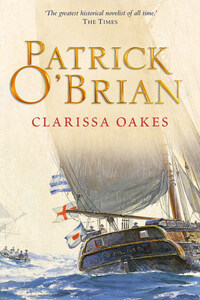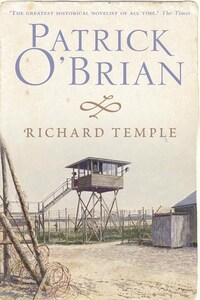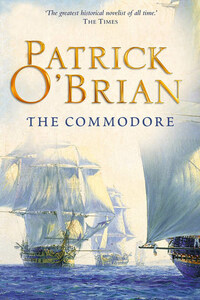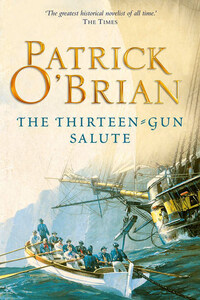PATRICK OâBRIAN
The Far Side of the World
Copyright
This novel is entirely a work of fiction. The names, characters and incidents portrayed in it are the work of the authorâs imagination. Any resemblance to actual persons, living or dead, events or localities is entirely coincidental.
Harper
An imprint HarperCollinsPublishers Ltd. 1 London Bridge Street London SE1 9GF
www.harpercollins.co.uk
First published in Great Britain by Collins 1984
Copyright © Patrick OâBrian 1984
Patrick OâBrian asserts the moral right to be identified as the author of this work
A catalogue record for this book is available from the British Library
All rights reserved under International and Pan-American Copyright Conventions. By payment of the required fees, you have been granted the non-exclusive, non-transferable right to access and read the text of this ebook on-screen. No part of this text may be reproduced, transmitted, down-loaded, decompiled, reverse engineered, or stored in or introduced into any information storage and retrieval system, in any form or by any means, whether electronic or mechanical, now known or hereinafter invented, without the express written permission of HarperCollins ebooks
HarperCollinsPublishers has made every reasonable effort to ensure that any picture content and written content in this ebook has been included or removed in accordance with the contractual and technological constraints in operation at the time of publication
Source ISBN: 9780006499251
Ebook Edition © DECEMBER 2011 ISBN: 9780007429370 Version: 2017-04-27
Dedication
For Wolcott Gibbs Jr
who first encouraged these tales
The sails of a square-rigged ship, hung out to dry in a calm.
1 Flying jib
2 Jib
3 Fore topmast staysail
4 Fore staysail
5 Foresail, or course
6 Fore topsail
7 Fore topgallant
8 Mainstaysail
9 Main topmast staysail
10 Middle staysail
11 Main topgallant staysail
12 Mainsail, or course
13 Maintopsail
14 Main topgallant
15 Mizzen staysail
16 Mizzen topmast staysail
17 Mizzen topgallant staysail
18 Mizzen sail
19 Spanker
20 Mizzen topsail
21 Mizzen topgallant
Illustration source: Serres, Liber Nauticus. Courtesy of The Science and Technology Research Center, The New York Public Library, Astor, Lenox, and Tilden Foundation
Authorâs Note
Perhaps few authors are wholly original as far as their plots are concerned; indeed Shakespeare seems to have invented almost nothing, while Chaucer borrowed from both the living and the dead. And to come down to a somewhat different plane, the present writer is even more derivative, since for these books he has in general kept most doggedly to recorded actions, nourishing his fancy with log-books, dispatches, letters, memoirs, and contemporary reports. But general appropriation is not quite the same thing as downright plagiary, and in passing it must be confessed that the description of a stormâs first aspect on p. 308 is taken straight from William Hickey, whose words did not seem capable of improvement.
If these tales are to continue, however, it is clear that the writer will soon have originality thrust upon him, for he is running short of history. Some ten or eleven years ago a respectable American publisher suggested that he should write a book about the Royal Navy of Nelsonâs time; he was happy to agree, since both the period and the subject were congenial, and he quickly produced the first of this series, a novel based upon Lord Cochraneâs early days in command of the Speedy, which provided him with one of the most spectacular single-ship actions of the war as well as a mass of authentic detail. But had the writer known how much pleasure he was to take in this kind of writing, and how many books were to follow the first, he would certainly have started the sequence much earlier. For the 14-gun Speedy did not capture the 32-gun Gamo until 1801 and this was followed by the ill-judged Peace of Amiens, which left enterprising sailors less time to distinguish themselves than they could have wished and deprived later writers of a great deal of raw material. Historical time has not yet run out for these tales, and in the present book the naval historian will detect an echo of HMS Phoebeâs pursuit of the USN Essex; but even in the early nineteenth century the year contained only twelve months, and it is possible that in the near future the author (if his readers will bear with him) may be led to make use of hypothetical years, rather like those hypothetical moons used in the calculation of Easter: an 1812a as it were or even an 1812b.
Yet if he should do so it will be strict chronology alone that is affected; he will continue to respect historical accuracy and speak of the Royal Navy as it was, making use of contemporary documents: the reader will meet no basilisks that destroy with their eyes, no Hottentots without religion, polity, or articulate language, no Chinese perfectly polite, and completely skilled in all sciences, no wholly virtuous, ever-victorious or necessarily immortal heroes; and should any crocodiles appear, he undertakes that they shall devour their prey without tears.














